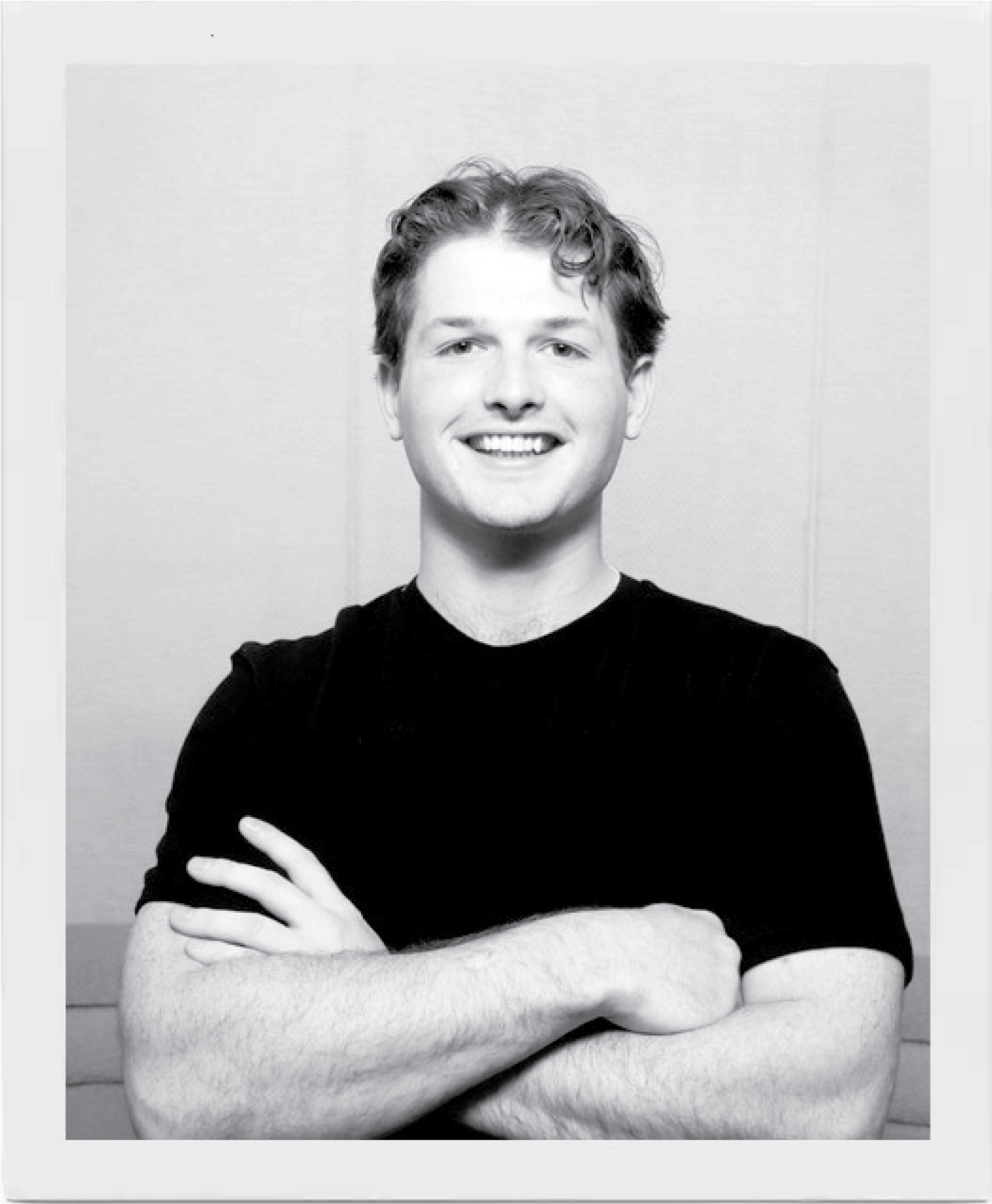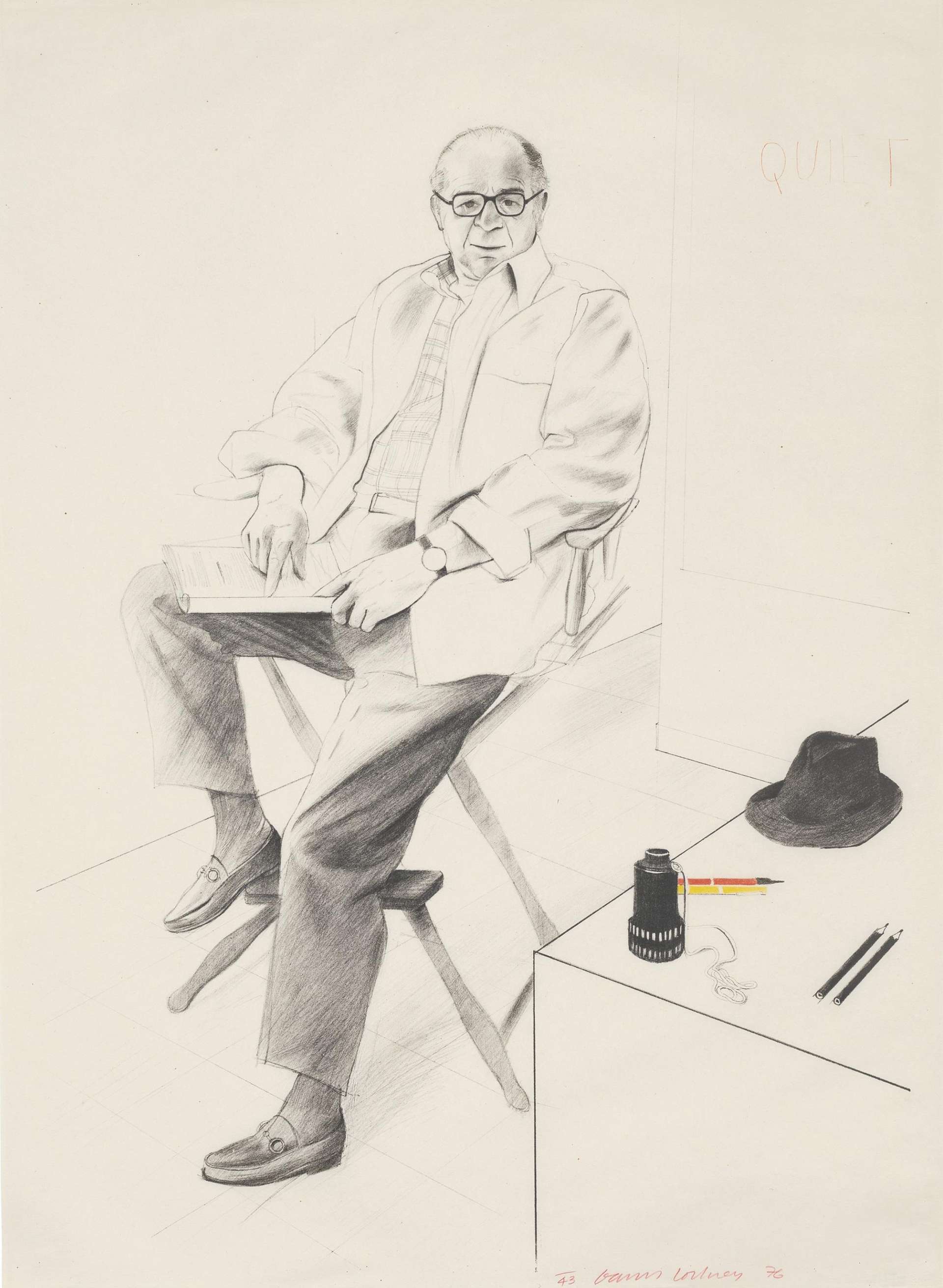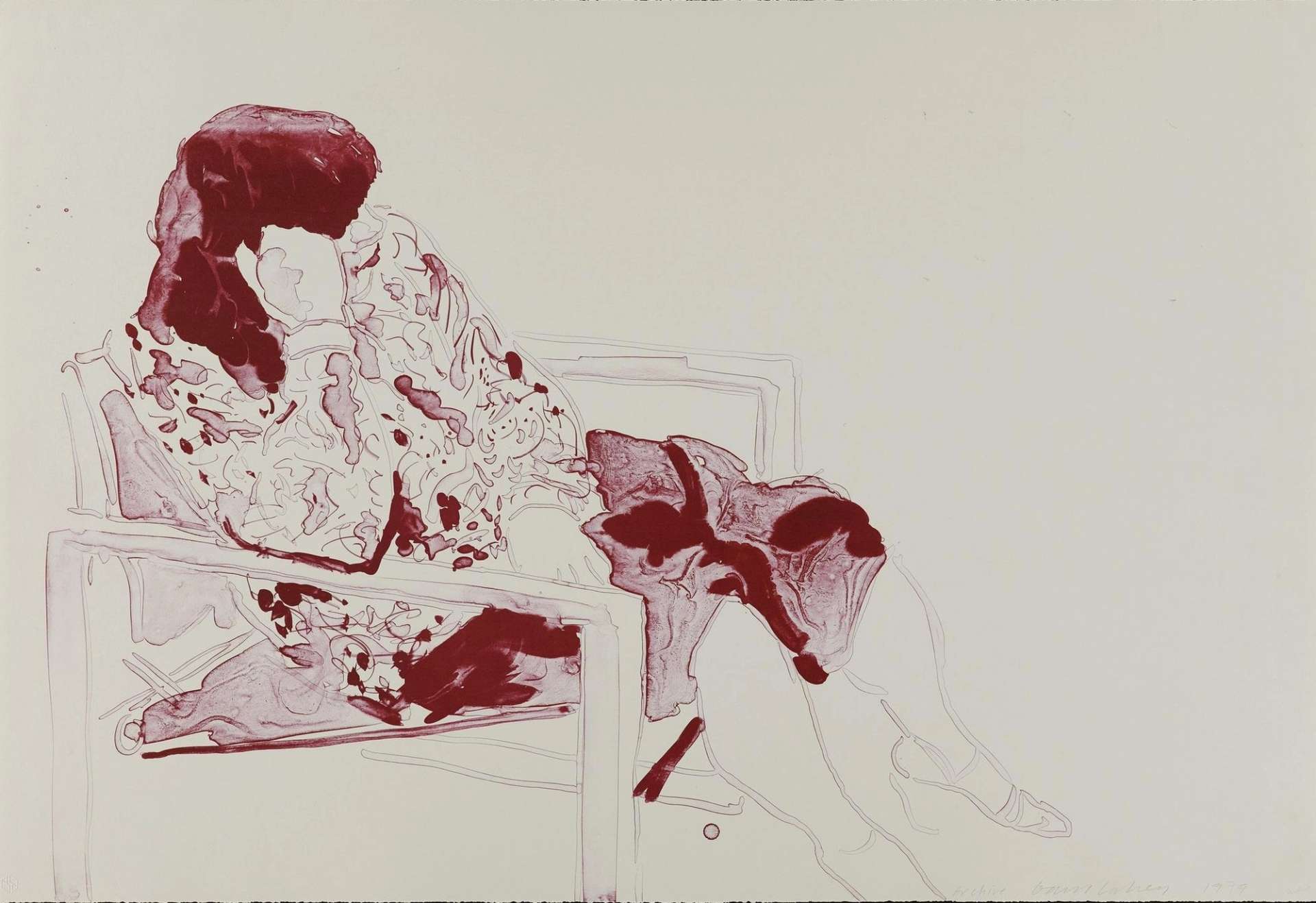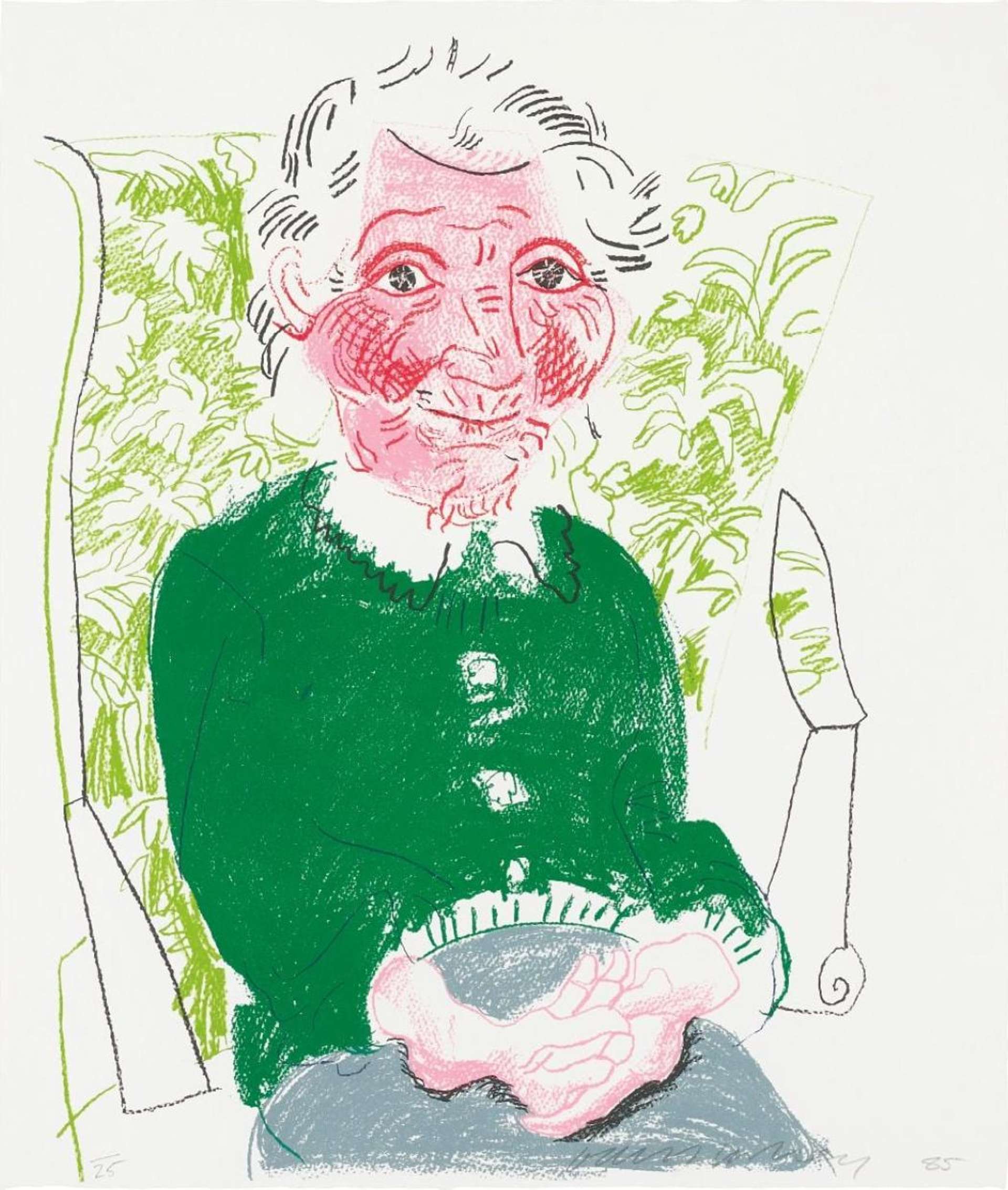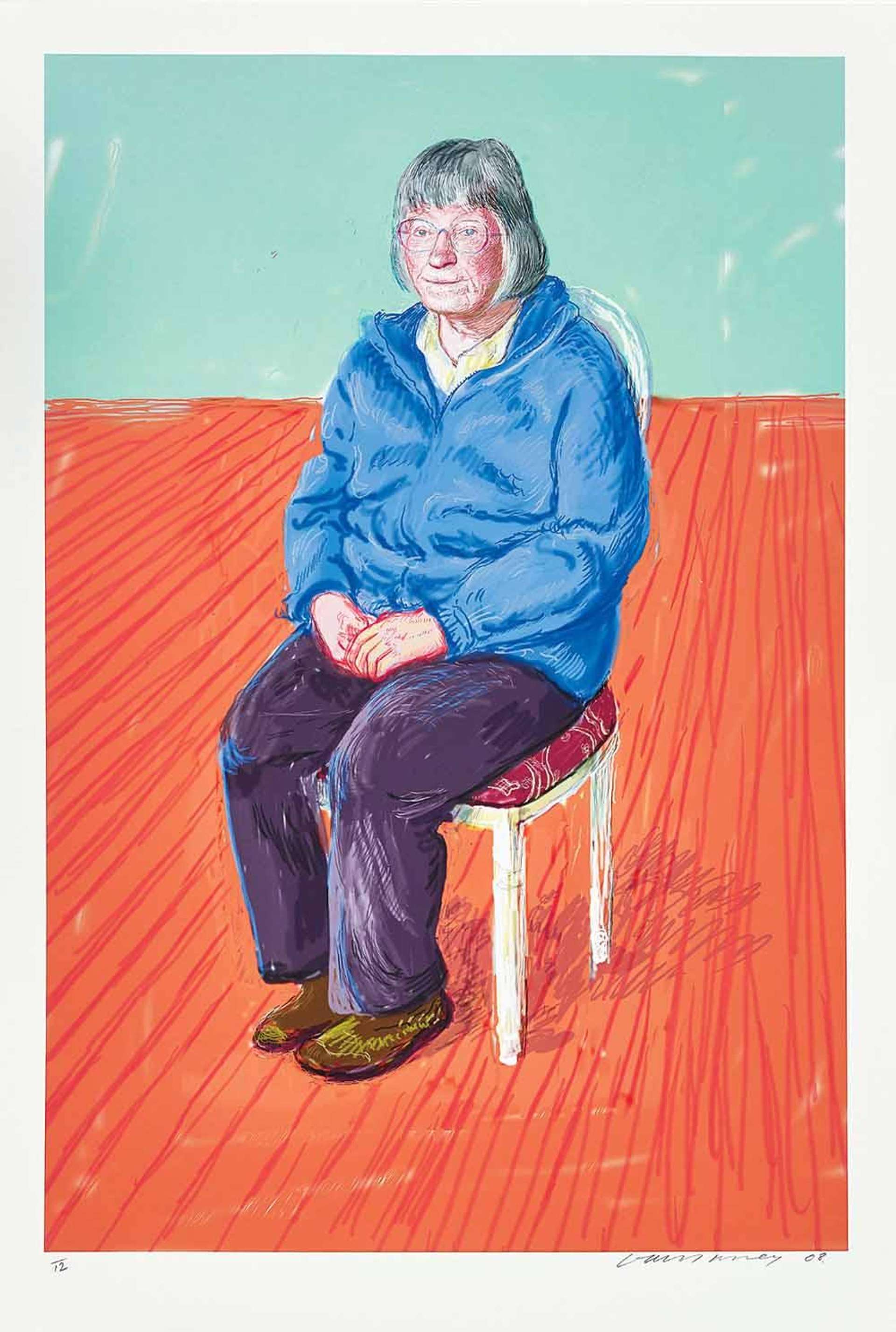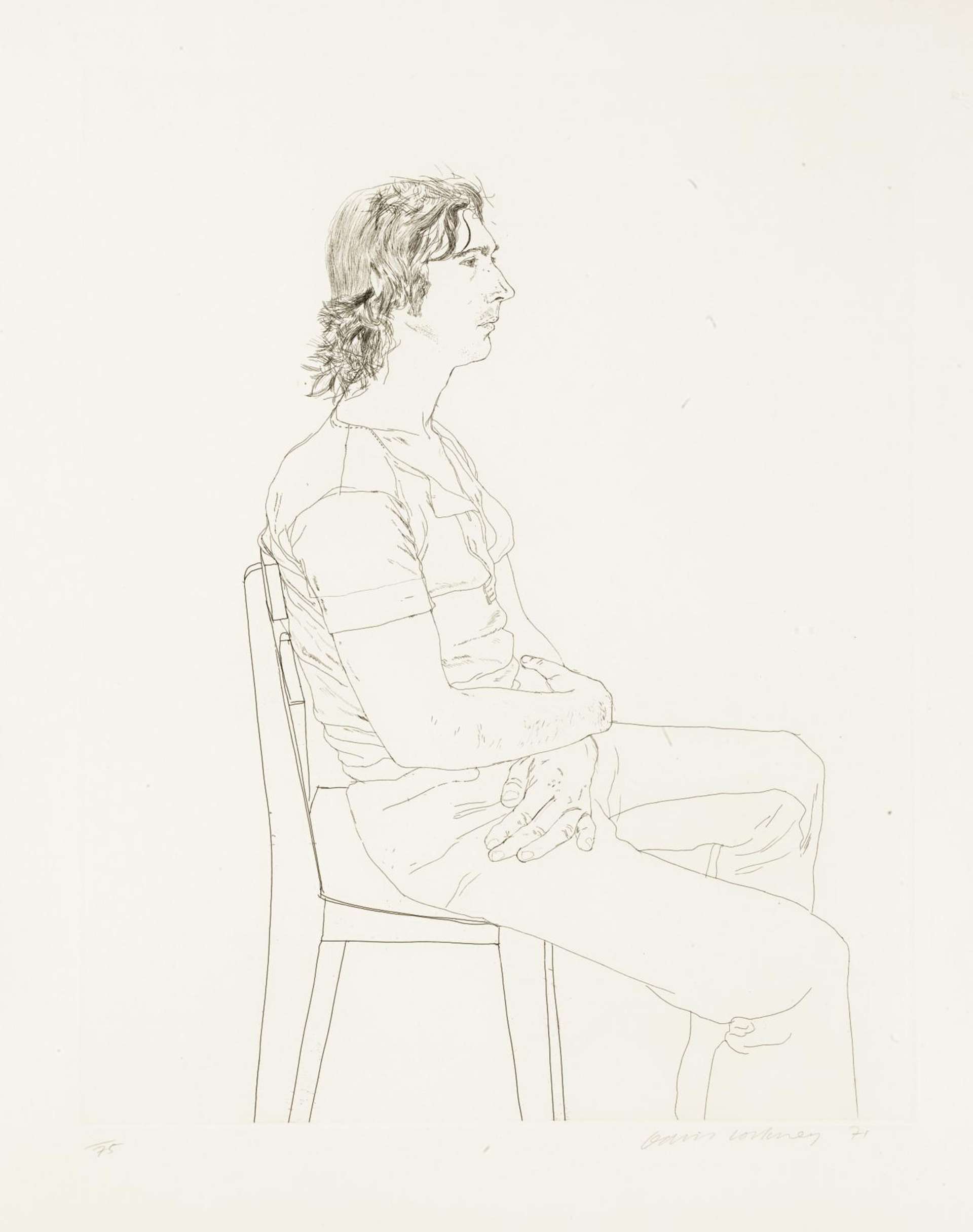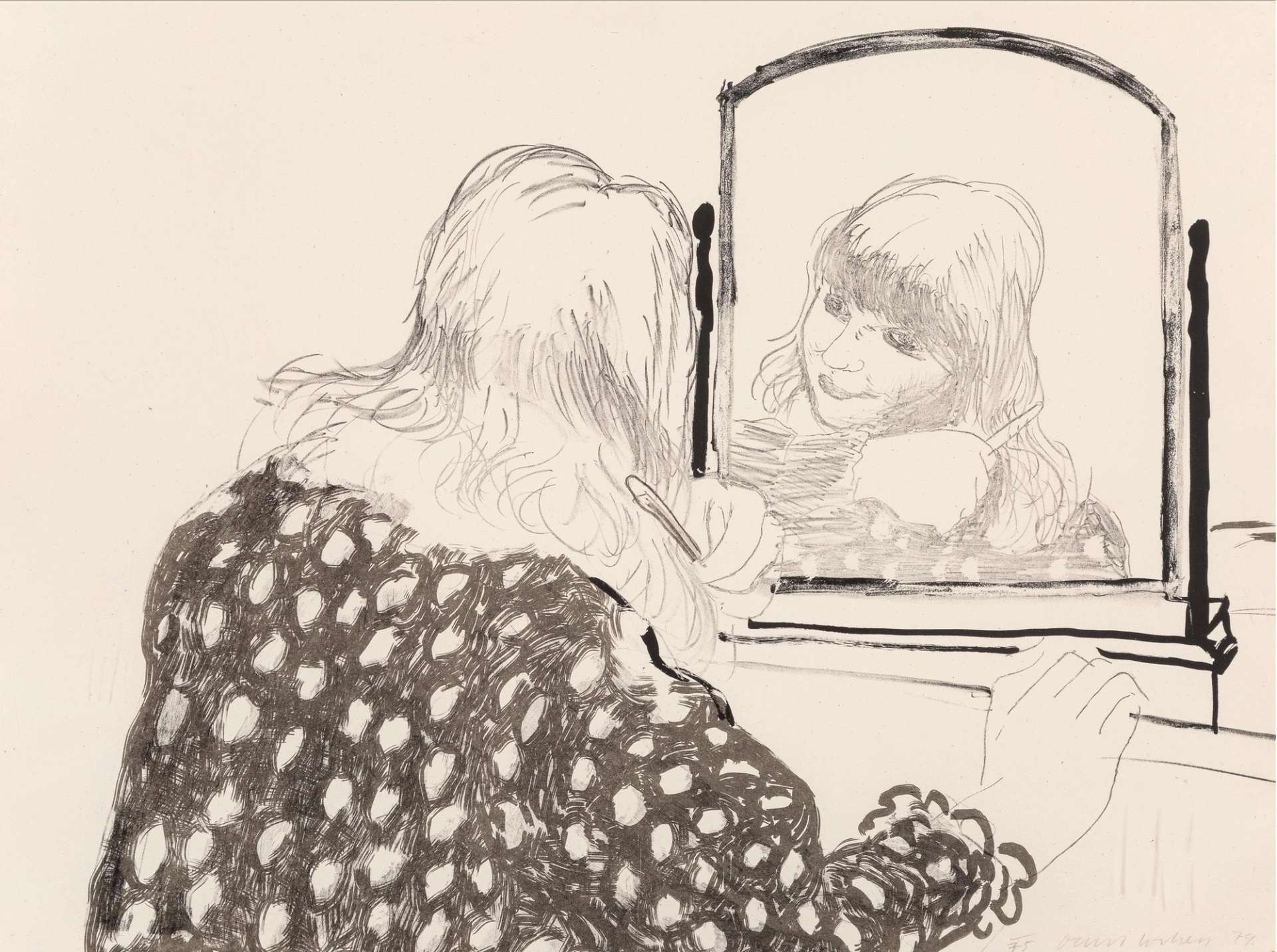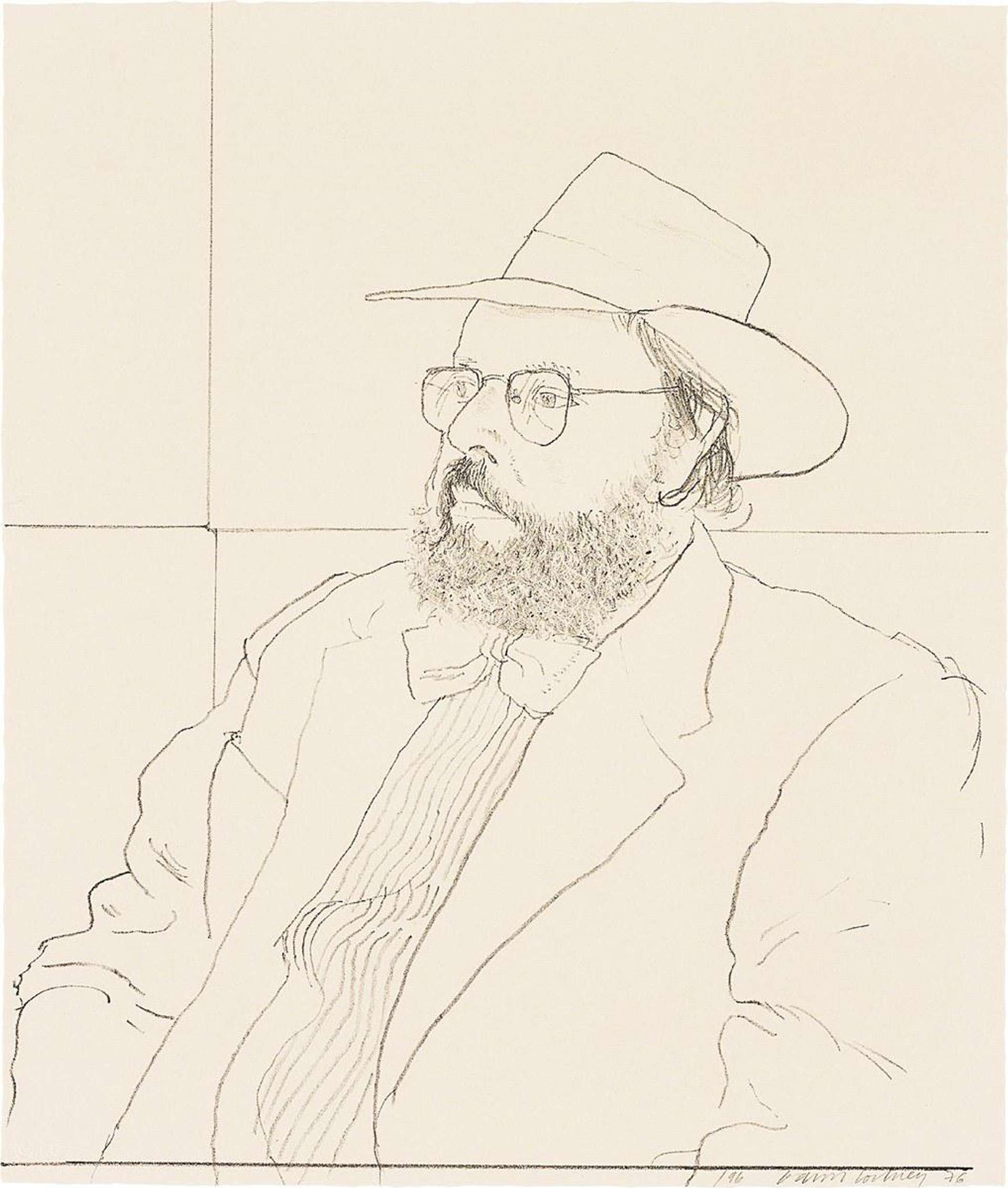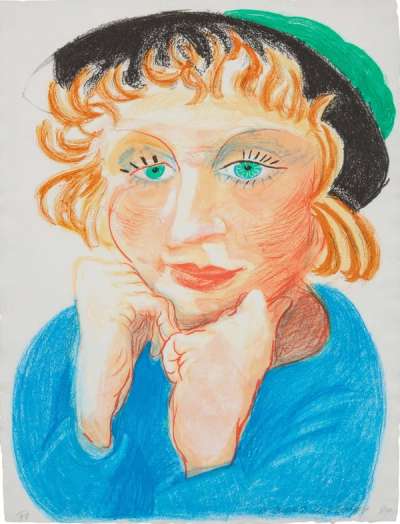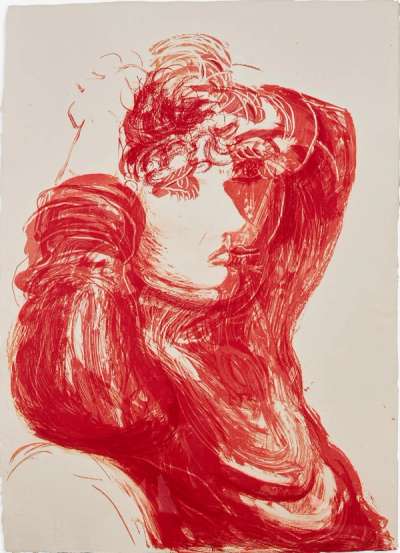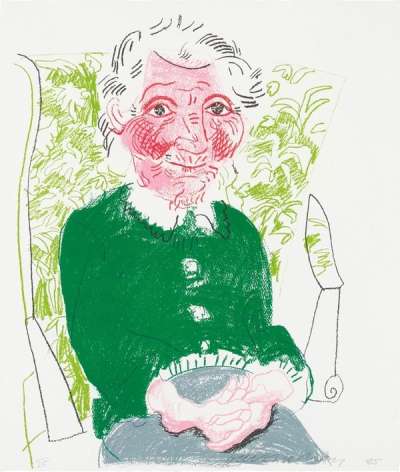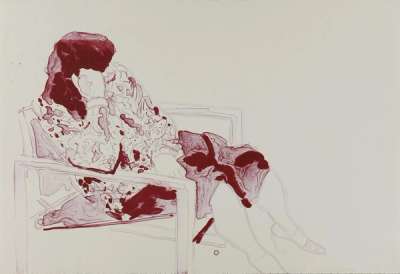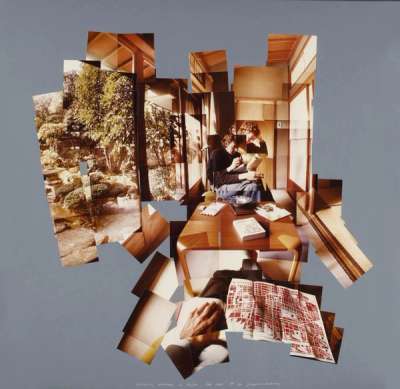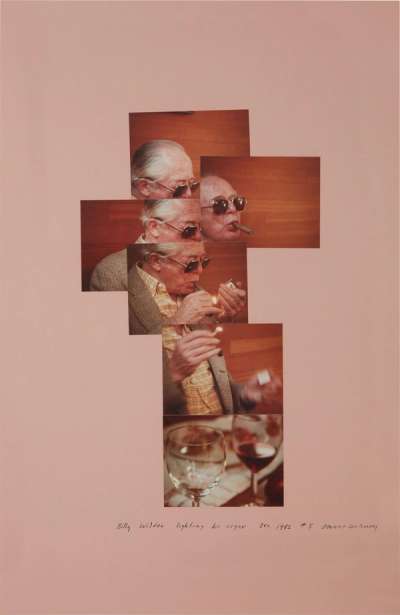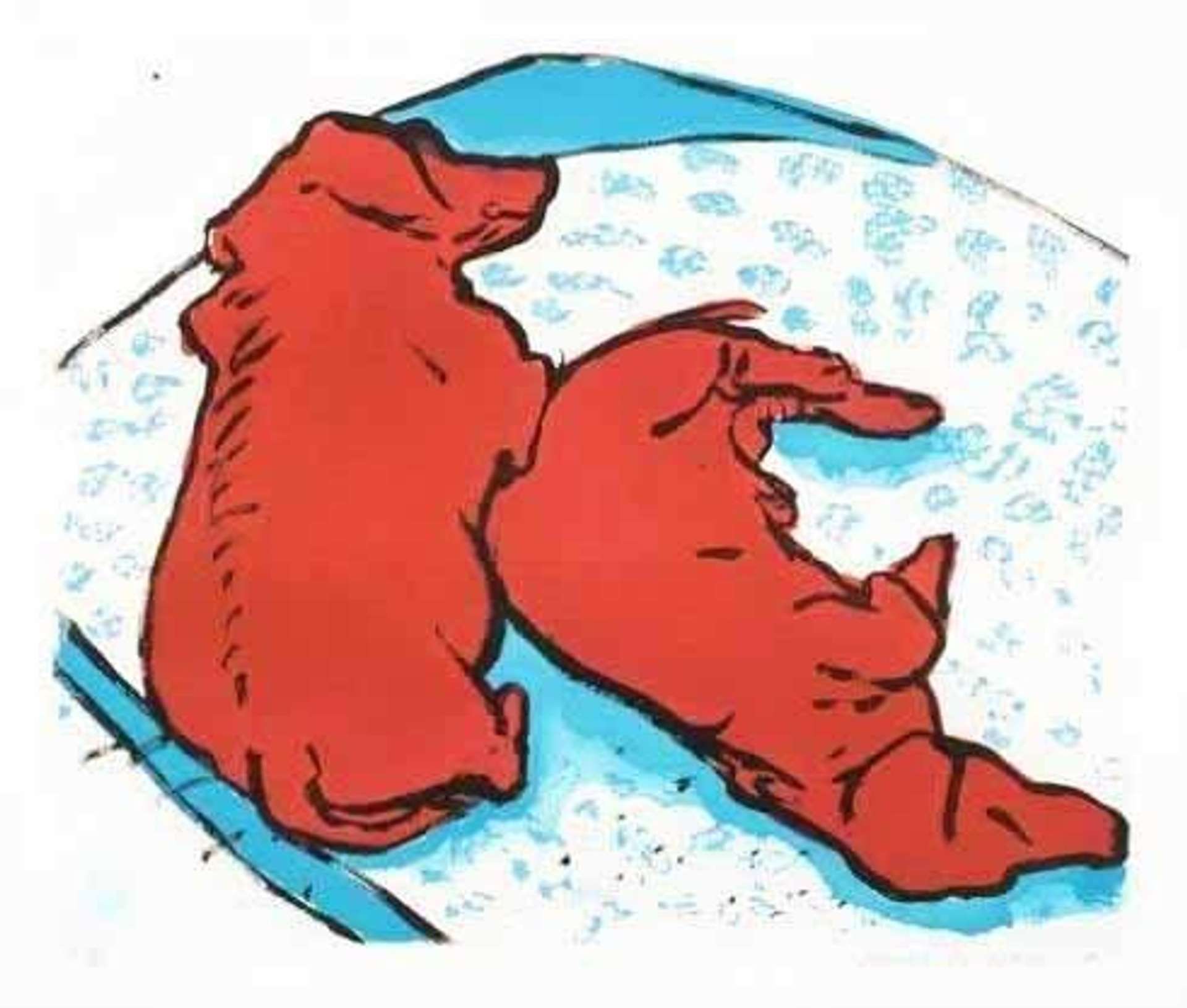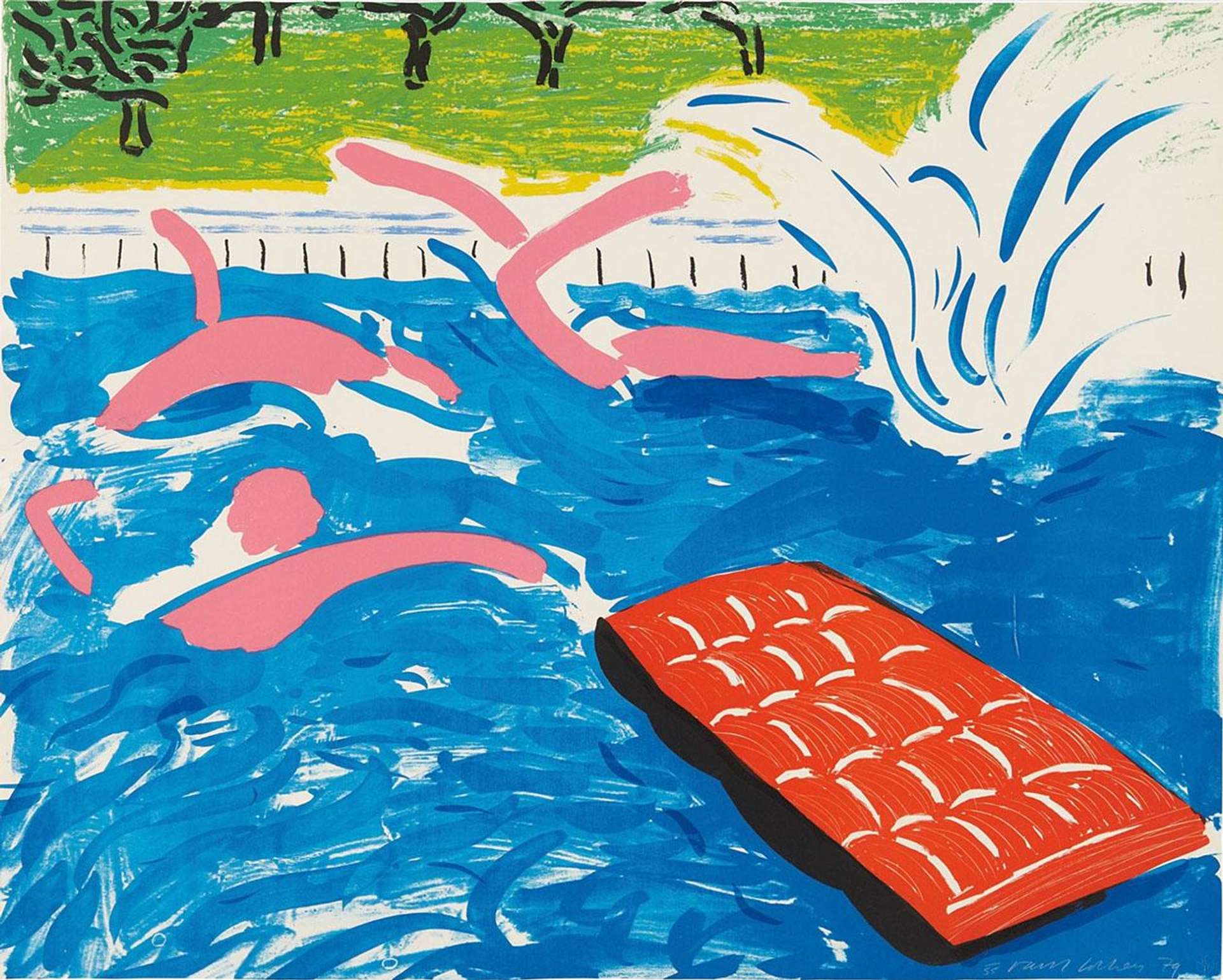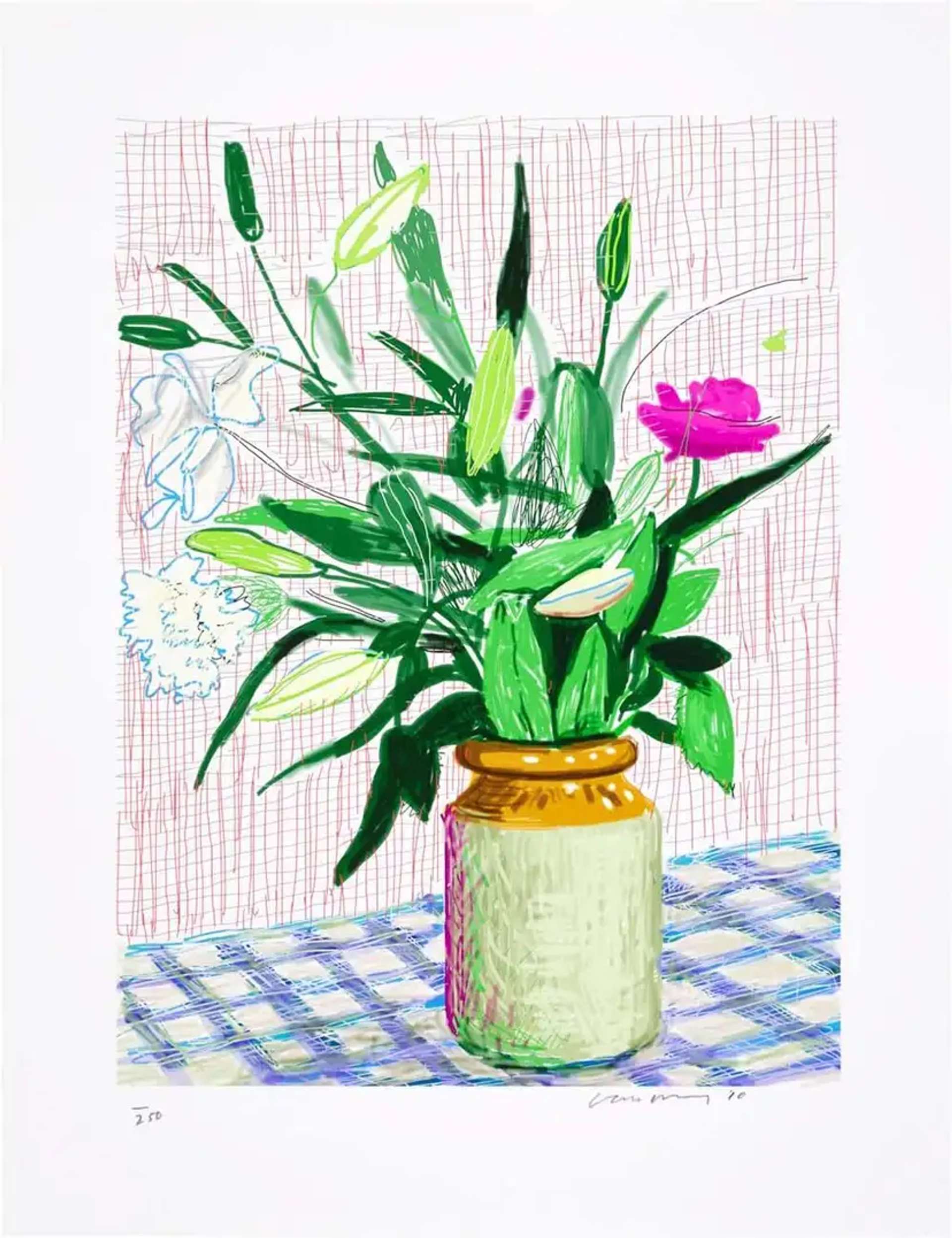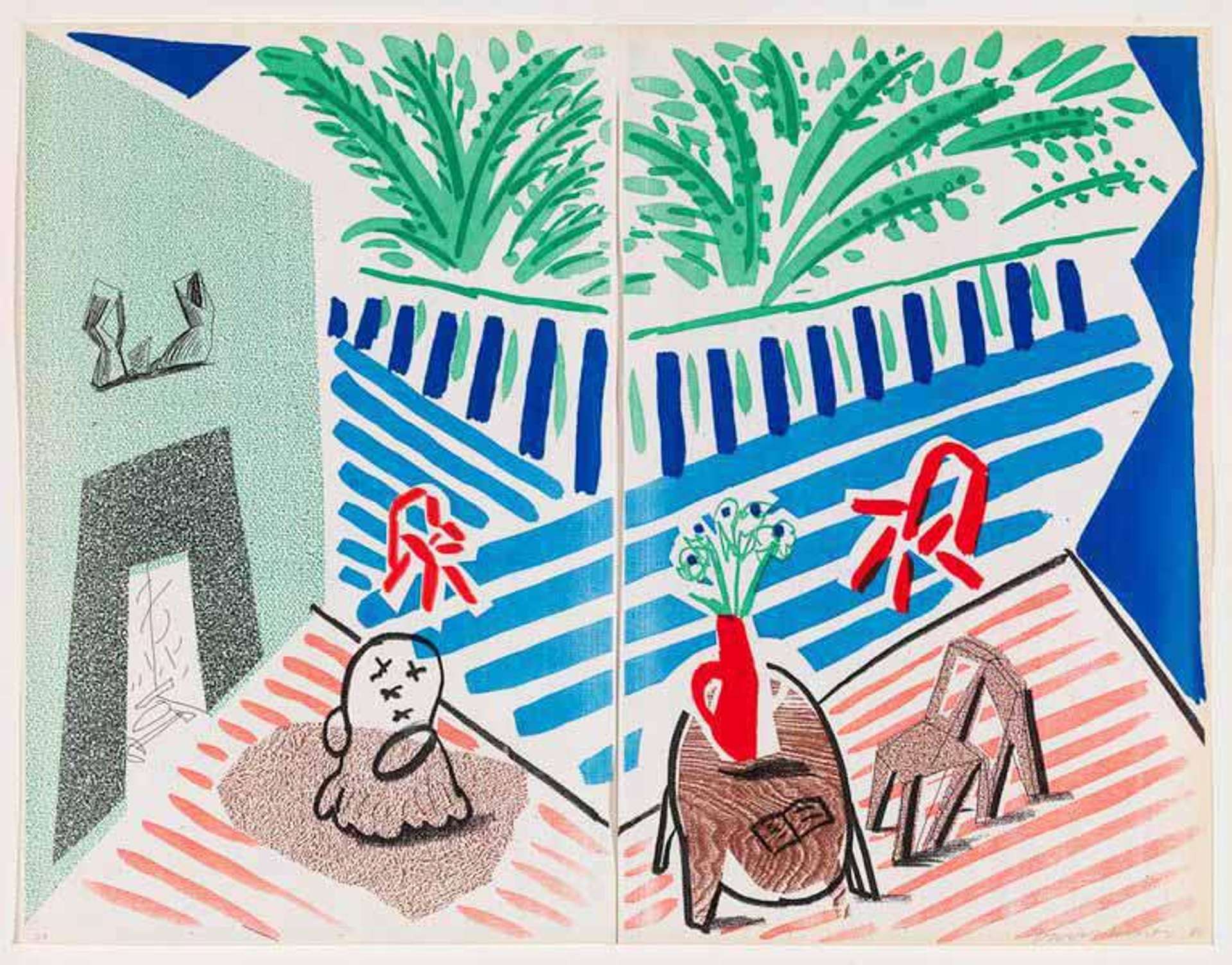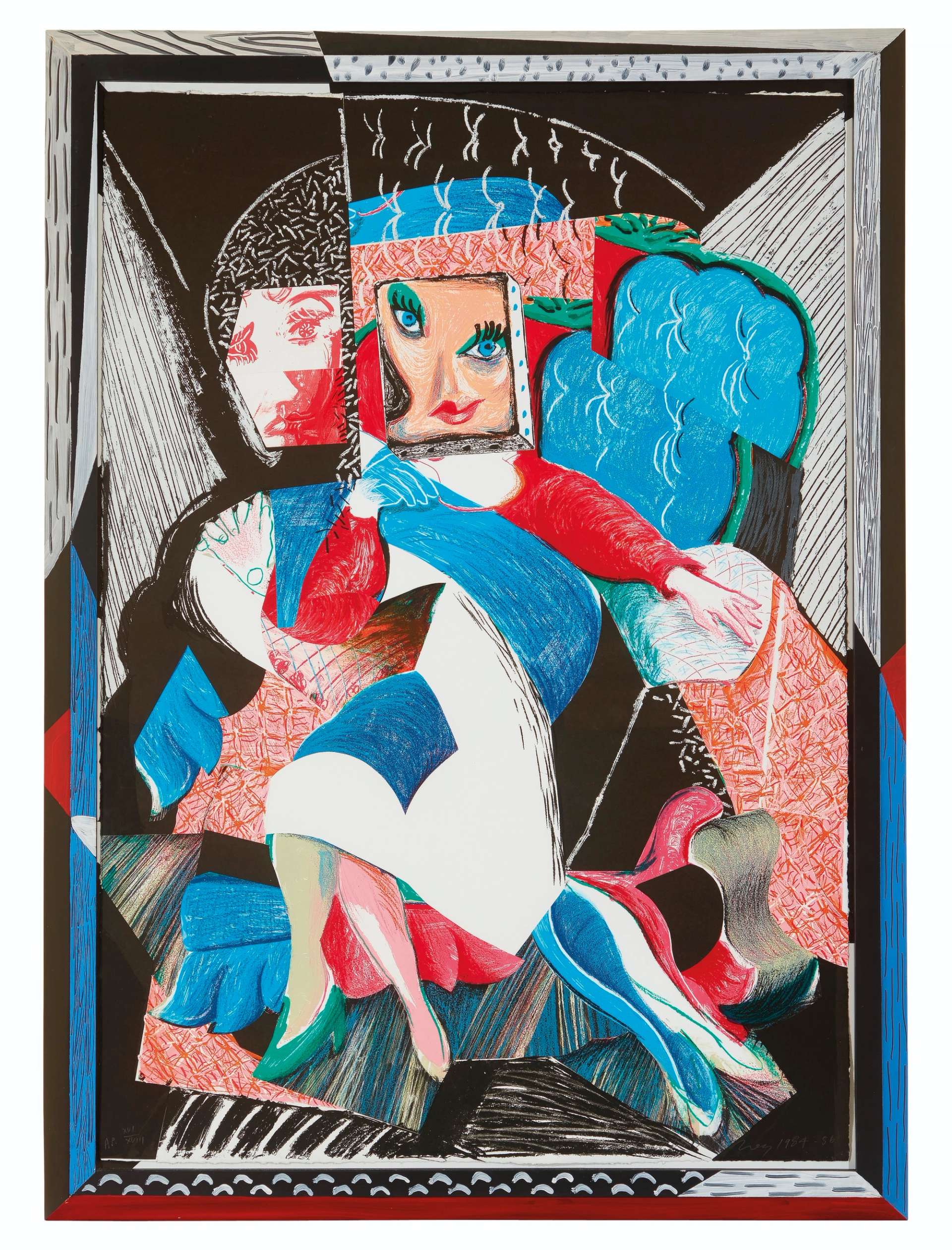 Peter Washing, Belgrade, September © David Hockney 1976
Peter Washing, Belgrade, September © David Hockney 1976Reflecting on David Hockney's extensive catalogue of portraiture, one is immediately drawn to the artist's extraordinary ability to capture the essence of his subjects. Every face he paints tells a story, a narrative rich in emotion, history, and personal connection. From the luminous gaze of Celia Birtwell to the modern aura of Harry Styles, Hockney's brush paints bright hues and thoughtful compositions that resonate with viewers across generations. His technique, a seamless dance between past and future, allows his subjects to transcend time, bridging the gap between timeless traditions and the contemporary world.
David Hockney's Portraiture Style
David Hockney's Portraiture Style
David Hockney, one of the most influential British artists of the 20th century, has carved a unique niche in the art world with his distinctive style, characterised by unique colour palettes, simplified forms, and a keen observation of the world around him. From the swimming pools of Los Angeles to the beautiful landscapes of Yorkshire, Hockney's subjects are diverse, but they all exude a sense of joy, intimacy, and deep personal connection.
One of the notable inspirations behind Hockney's portraiture has been his admiration for Vincent Van Gogh. This admiration is evident in Hockney's series of landscapes that echo Van Gogh's bold brushwork and use of colour. Hockney has often spoken about the profound impact Van Gogh's work had on him, especially in terms of his ability to portray the essence and emotion of a scene rather than its physical attributes. This shared vision of seeing the world beyond its superficial layers continues to influence and inspire Hockney's legacy.
What techniques does David Hockney use in his portraits?
What techniques does David Hockney use in his portraits?
Over the decades, Hockney's style has witnessed an evolution. While his earlier works leaned towards realism with a touch of abstraction, largely influenced by Cubism and photography, his later pieces became more exploratory in nature, merging various techniques and media. Hockney's immersion into technologies and mediums, such as Polaroid collages and iPad drawings, also echoes his perpetual quest not only to depict but to communicate, to narrate, and to immerse his audience into a confluence of past, present, and future dialogues. His style, thereby, elegantly twirls between the classical and the contemporary, offering a timeless quality to his portraits.
What themes are explored in David Hockney's portraiture?
What themes are explored in David Hockney's portraiture?
Hockney's subjects, often intimate acquaintances or personal inspirations, are rendered not just in their physical likeness but in the multitude of their existence – capturing fleeting moments of vulnerability, contemplation, and joy. Through his art, Hockney explores the dynamics of friendship, love, and kinship, nudity and the human body. subtly hinting at the nuances of human connections. His portraits also reflect upon the passage of time, with the images of his subjects often bearing the weight of years, experiences, and memories.
His subjects, often those close to him or of personal significance, are captured in all their complexity – from moments of vulnerability and introspection to bursts of joy. Hockney intricately navigates the realms of friendship, love, and family ties, as well as the human body in its raw authenticity. His work subtly underscores the intricate layers of human relationships. Additionally, a sense of temporality permeates his portraits; the faces and postures of his subjects convey not only the immediacy of the present but also the rich tapestry of their past, shaped by years, experiences, and cherished memories.
Hockney's foray into portraiture also includes themes of self-reflection and identity. His depictions often serve as a mirror, not only reflecting the person portrayed but also providing insights into Hockney's own psyche and aspirations, making each piece a dual introspection of both the artist and his muse. In his series Photo Collages, Hockney’s feet are featured in multiple works across the collection, immersing himself in the art-making process while highlighting the relationship between the observer and the observed.
Who are the subjects of David Hockney's portraits?
Who are the subjects of David Hockney's portraits?
The Hockney Women: Laura and Margaret
Hockney, whose art has explored layers of personal and emotional realms, frequently portrayed his mother, Laura Hockney, in his works, embedding a lasting love and maternal warmth. Laura, depicted as a gentle, thoughtful, and composed figure in various mediums, became an emblem of tranquillity and contemplation within his career. Her presence in his art reflects an intimate exploration of familial bonds and personal history. Hockney’s portrayal of his mother manages to examine the silent yet profound communications between parent and child, transcending her memory into a universal symbol of motherhood.
Usually, Laura is pictured seated with a calm expression on her face or resting. Photo Collages includes her multiple times across the warm interiors of a Los Angeles dwelling, and a contrasting cold, November day in Yorkshire. Another significant female figure in Hockney's work is his sister, Margaret Hockney. Interestingly, her portrayal bears a resemblance to their mother, especially in her poses. This likeness might be coincidental, but it prompts speculation about Hockney's perspective. Are viewers seeing these pivotal women as Hockney does? While Margaret is a distinct subject from Laura, there's an undeniable similarity in their representation challenging us to ask: is there a reason Hockney depicts the two through such a similar lens? A common thread of maternal support or womanly grace in his life? In any case, Laura Hockney's presence has influenced not just her visual representations in Hockney's body of work but also shaped his perception of other subjects. He recognises a certain softness in them, whether they are female or otherwise, that springs forward in his compositions.
Maurice Payne
Maurice Payne, Hockney’s master printer, was pivotal in bringing the artist's print visions to fruition. Hockney's etching of Payne is greater than a representation; it's a narrative in itself, illuminating the relationship between the artist and his trusted collaborator. The piece is steeped in personal significance, depicting Payne in a reflective, tranquil state—a contrast to the dynamic nature of Hockney's life at the time.
This period saw Hockney creating some of his most renowned pieces, where his artistic endeavours were influenced by his interactions and the bonds he shared with those around him. Each portrait by Hockney, including Maurice Payne, is an exploration of the relationship between the artist and his muse. These portraits capture more than the physical likeness; they are emotional landscapes, mapping the terrains of friendship and professional respect. The 1971 etching stands as an enduring homage, chronicling a chapter in Hockney's life where personal connection and artistic output were deeply entwined.
celia
Celia Birtwell: A Lifelong Muse
British Textile designer Celia Birtwell was a strong presence in Hockney’s career and personal life. As their careers began to soar throughout the 1960s and 70s, the pair shared a profound connection with one another. Her multifaceted portrayals, from contemplative to casual, chart Hockney's evolving style and capture the dynamics between muse and artist.
Celia In A Polka Dot Skirt, Celia In The Director's Chair, and Celia Making Tea perfectly illustrate Hockney’s brilliance in reiterating a subject across different mediums and visual styles to carry a motif in novel ways each time. Of Hockney’s Celia works, one of the most striking renditions of his iconic companion is Red Celia. Beyond this beautiful crimson composition, viewers can look closely and see a double profile perfectly executed in a manner masters of Cubism would approach.
Navigating through the passages of both love and enduring friendship, Gregory Evans, former lover and long-standing confidant of David Hockney, finds himself enshrined within the artist’s volume of subjects. Their relationship, evolving through varied dynamics, from romance to a lifelong friendship, has imbued Hockney’s work with layers of emotional and interpersonal exploration. Evans, having been both muse and a vital part of Hockney’s personal and professional life, emerges within the artworks not just as a figure but as a testament to the multifaceted nature of human connections. His presence in Hockney’s oeuvre witnesses the highs and lows of the artist’s journey, rendering their bond an eternal subject in the world of art.
Evans appears prominently across numerous Hockney collections, often emerging as a vital component in what appears to be his visual diary, Photo Collages. He is referenced multiple times in pieces such as Gregory Reading In Kyoto, Gregory And Shinro, and Gregory Watching The Snow Kyoto, Feb 21st 1983, to name a few. Although collectors may discover Gregory in Hockney’s Portraits and, of course, the Gregory Evans collection, perhaps the most striking depiction of Evans is through a traditional Cubist lens in Hockney’s An Image Of Gregory. In this piece, Hockney interprets his friend through an approach reminiscent of Picasso. Hockney's ability to capture Evans in various lights and styles speaks not only to his versatility as an artist, but to the depth of his connection with his subject.
David Hockney’s Portfolio of Friendships
A menagerie of friendships are on full display in Hockney’s portraiture. Viewers may find themselves wondering who his favourites were based on how often we see them in his oeuvre. Many of Hockney’s friends have made recurring appearances in his works, suggesting their pivotal roles in his life and creative journey. Henry, Ann, Joe–be it in, have become familiar faces on complete display in Hockney’s intimate portfolio. In Hockney’s intimate portfolio, Henry, Ann, and Joe have become familiar faces, prominently featured in collections like Friends or Gemini. Across other popular suites, Hockney pays homage to friend Billy Wilder, former lover, Peter Schlesinger, and even masters like Picasso in Influences.
Perhaps most compelling is Hockney's varying application of colour when portraying his most cherished subjects. Vibrant hues can dance with life, capturing the energy and dynamism of youthful interactions, while more muted sketches and drawings might hint at introspection, moments of calm, or perhaps nostalgia. Each medium Hockney employs offers a unique perspective on the same subject, underscoring the multifaceted nature of human relationships. It is this ever-evolving interpretation, seen through the lens of varied mediums, that makes Hockney's portrayal of friendships an engaging visual journey.
Are David Hockney's portraits a good investment?
Over the past five years, Hockney’s works have reached an average annual growth rate (AAGR) of 19%. Included in his top auction prices, collectors will find a number of portraits featuring some of Hockney’s most acclaimed works including an image of one of his dearest friends, curator Henry Geldzahler. When it comes to collecting Hockney prints, both buyers and sellers can expect favourable results due to such a high market demand. Hockney’s work, particularly his portraits, has always commanded attention both for its artistic brilliance and financial return. For art collectors and investors alike, these passion assets double not only as an acclaimed work to include in their collection, but a savvy portfolio choice as well.
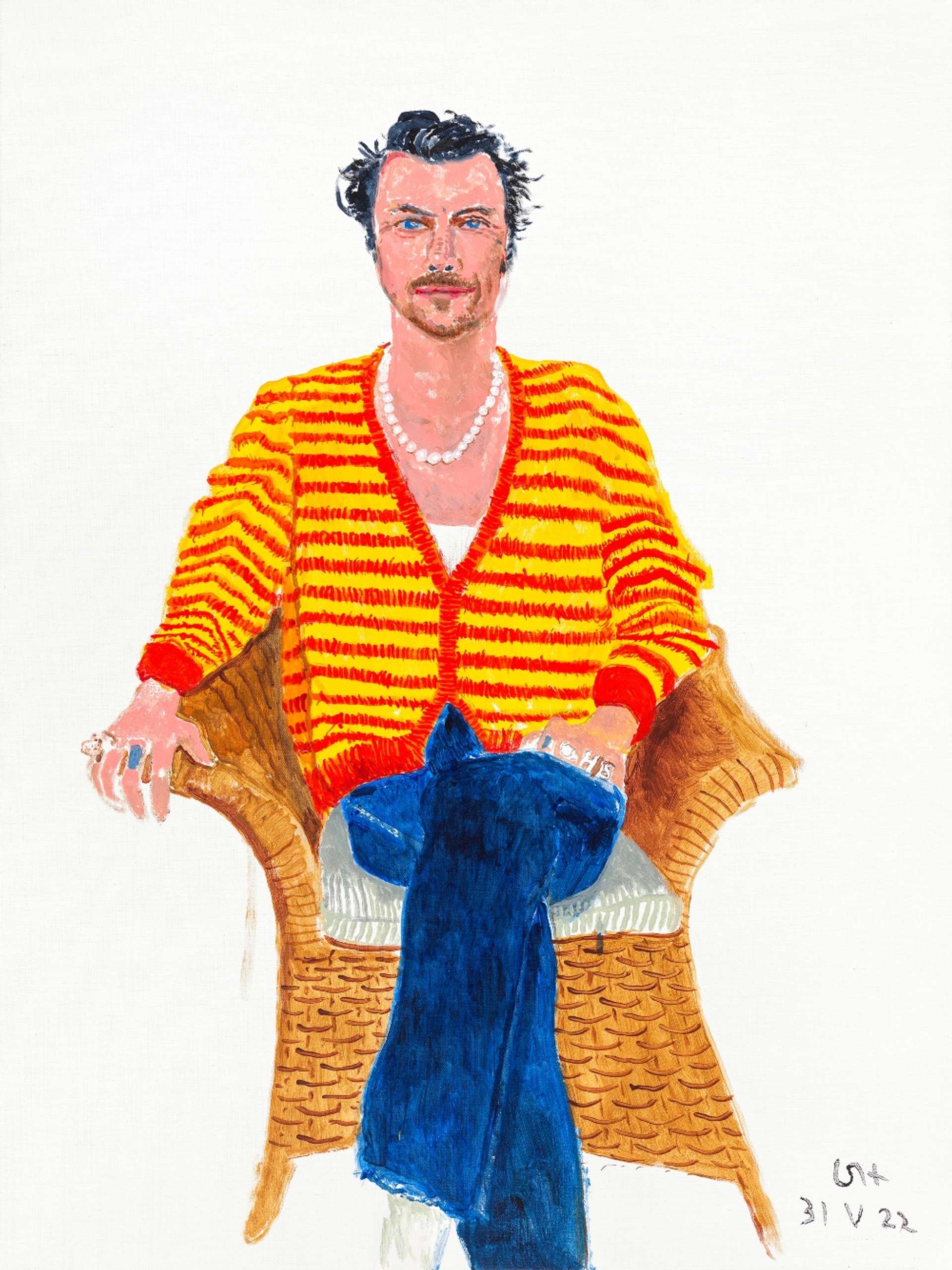 Image © Artnet News / Harry Styles, May 31st 2022 © David Hockney 2022
Image © Artnet News / Harry Styles, May 31st 2022 © David Hockney 2022David Hockney's portrait of Harry Styles showcases the melding of pop culture and seasoned artistry. Such a collaboration resonates not just within art communities but with pop aficionados as well. This union reveals how contemporary figures like Styles, a symbol of modern fluidity and unrestrained expressiveness, can be gracefully captured by an artist as timeless as Hockney.
Styles, known for challenging boundaries in his own right, models a new era of modern identity and self-expression. However, for Hockney, Styles was “just another person” suggesting that for this (name artist), it was simply a regular day at work. Hockney, having painted numerous portraits over the years, brings to this artwork an inherent understanding of how to navigate the rich nuances of one's persona. Here, he doesn't just capture Styles; he immortalises the essence of a generation that Styles represents.
Techniques Hockney employed for this portrait became talking points in art circles. Known for embracing technology, it wouldn't be far-fetched to consider that a blend of traditional and digital methods might have been his approach. Such a combination would aptly mirror Styles' own blend of traditional and contemporary influences. Yet, through this artwork, Hockney underscores the enduring essence of tradition with his masterful use of acrylic in a timeless portrayal
Reflecting on Hockney's Legacy in Portraiture
David Hockney’s impact on the art world, particularly through his portraits, is undeniable. Each portrait, from Celia Birtwell to Harry Styles, captures more than likeness–they weave stories, memories, and emotions. As Hockney has manoeuvred his way through various subjects and styles, he has unveiled the depth of his vision and the expanse of his experiences. Whether exploring the intimate intricacies of personal relationships or the broader commentary on societal dynamics, his works become a mirror reflecting not only the subject but the world they inhabit. Hockney's commitment to both traditional and innovative techniques further cements his place as an icon, constantly evolving while honouring art's rich history.
